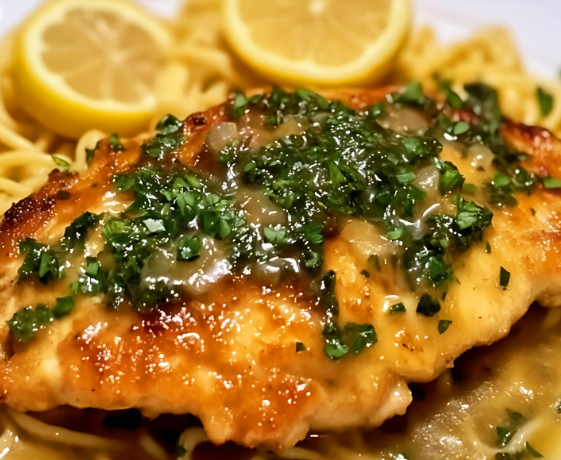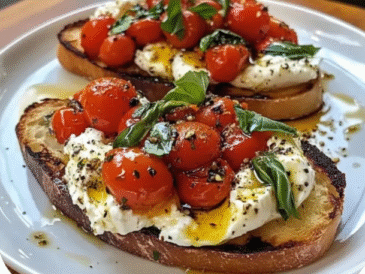Chicken Piccata is a beloved dish in Italian-American cuisine, celebrated for its vibrant flavors and elegant simplicity. This recipe featuring tender chicken breasts, zesty lemon sauce, briny capers, and a touch of butter is a perfect balance of tangy and savory that can elevate any dinner table. Whether you are a novice in the kitchen or an experienced home chef, mastering Chicken Piccata with Lemon Sauce will add a timeless, restaurant-quality entrée to your repertoire.
What is Chicken Piccata?
Originating from Italy, “Piccata” refers to meat—traditionally veal—that is sliced, dredged in flour, sautéed, and served in a luscious sauce of lemon, butter, and capers. Chicken Piccata is a popular variation that uses boneless, skinless chicken breasts, making it accessible and easy to prepare at home.
The key elements that define Chicken Piccata are:
- Thinly pounded chicken breasts for quick, even cooking
- A golden, lightly crispy crust formed by dredging in flour
- A bright, tangy sauce made with fresh lemon juice and chicken broth
- The distinctive salty and sharp flavor of capers
- The richness of butter to create a silky sauce texture
- Garnished with fresh parsley and lemon slices for visual appeal and added aroma
Why Chicken Piccata is a Must-Try Recipe
Chicken Piccata’s popularity comes from its harmonious blend of flavors and textures. It is simultaneously fresh, rich, tangy, and comforting. Here are some reasons why you should try making this dish at home:
- Quick and easy: Ready in just 30 minutes, it’s perfect for weeknight dinners.
- Low-calorie, high-protein: With about 320 kcal per serving, it fits well into healthy eating plans.
- Impresses guests: Its vibrant sauce and elegant plating make it suitable for special occasions.
- Versatile: Pairs well with pasta, mashed potatoes, or steamed vegetables.
- Ingredient friendly: Uses pantry staples and fresh lemons, widely available year-round.
Ingredients Breakdown: The Secrets Behind the Flavor
1. Boneless, Skinless Chicken Breasts
Chicken breasts are the star of the dish. Using boneless, skinless breasts allows for even cooking and a lean, tender protein base. Pounding them to an even thickness (~1/2 inch) ensures:
- Uniform cooking time
- Juicy texture without drying out
- Ideal surface for dredging and browning
2. Salt and Pepper
Basic seasoning is essential for highlighting the natural flavor of the chicken without overpowering the delicate sauce.
3. All-Purpose Flour for Dredging
Dredging the chicken in flour before sautéing creates a light crust that:
- Helps seal moisture inside the chicken
- Forms the foundation for a silky sauce by absorbing flavors
- Adds a subtle texture contrast
4. Unsalted Butter and Olive Oil
The combination of butter and olive oil provides:
- A perfect medium for sautéing that balances flavor and smoke point
- Butter adds richness and smoothness to the sauce
- Olive oil contributes a fruity depth and healthier fat profile
5. Chicken Broth
Chicken broth enhances the sauce’s body and adds savory depth without overpowering the fresh lemon notes. Using low-sodium broth is recommended to control salt levels.
6. Fresh Lemon Juice
The lemon juice is the defining component that gives piccata its characteristic bright, citrusy tang. Using freshly squeezed juice rather than bottled ensures:
- Vibrant, natural flavor
- Balanced acidity that cuts through the butter’s richness
- Aroma that elevates the entire dish
7. Capers
Capers are small flower buds preserved in brine or salt, lending a sharp, salty, and slightly floral punch to the sauce. They create a unique contrast to the lemon’s acidity and the butter’s richness, making the sauce complex and layered.
8. Fresh Parsley
Chopped parsley adds a fresh herbal note, a pop of green color, and a slight bitterness that balances the sauce’s flavors.
9. Lemon Slices for Garnish
Sliced lemons not only enhance the presentation but also add a refreshing zest and aroma as a finishing touch.
Step-By-Step Instructions for Perfect Chicken Piccata
Step 1: Pound the Chicken to Even Thickness
Place each chicken breast between two sheets of plastic wrap or parchment paper. Using a meat mallet or rolling pin, gently pound the chicken until it reaches approximately 1/2 inch thickness. This promotes even cooking and tenderness.
Step 2: Season and Dredge in Flour
Season both sides of the chicken generously with salt and freshly ground black pepper. Dredge each breast lightly in all-purpose flour, shaking off excess. The flour helps create a golden crust and thickens the sauce later.
Click page 2 for more




